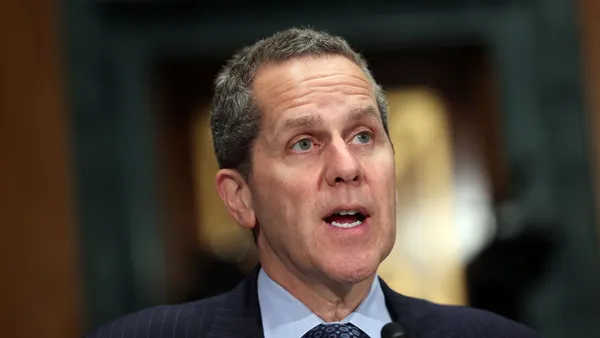Bank of America has begun sending “letters of education” — which warn of potential disciplinary action — to employees who are not meeting the bank’s office attendance policy, the Financial Times reported Wednesday.
“Failure to follow the workplace excellence expectations applicable to your role within two weeks of the date of this notification may result in further disciplinary action,” a letter posted online by a Bank of America employee stated.
A bank spokesperson did not verify the exact contents of the letter but said the text was consistent with warning letters that had been sent.
Bank of America began issuing the letters last fall to address office attendance concerns, the Financial Times reported. The bank typically has used such letters to broach other workplace issues.
“Sending out these letters, that wasn’t happening before,” Jeanne Branthover, head of the global finance practice at DHR Global, a recruiting firm, told the Financial Times. “Once one firm says it is going to do X, then everyone is going to follow.”
That theory tracks. If Bank of America began using its letters of education last fall to spotlight workplace attendance, the timeline would be a rough match for when Goldman Sachs issued a “reminder” to its employees.
“We have continued to encourage employees to work in the office five days a week,” Goldman’s human resources chief, Jacqueline Arthur, said in September in a statement seen by Bloomberg. “While there is flexibility when needed, we are simply reminding our employees of our existing policy.”
Bank of America and Goldman are hardly the only large banks to clamp down in the past year on office attendance.
Citi in June began asking its managers to discuss the bank’s office-attendance policy with employees who regularly fail to comply with it, Bloomberg reported. Managers were said to consider compliance with company rules when designing pay packages, a source told Bloomberg at the time. The bank also had begun tracking U.S. and U.K. employees’ office-entry swipes.
JPMorgan Chase’s operating committee last April told the bank’s managing directors it expected them in the office every weekday.
“Our leaders play a critical role in reinforcing our culture and running our businesses,” the committee wrote in a memo. “They have to be visible on the floor, they must meet with clients, they need to teach and advise, and they should always be accessible for immediate feedback and impromptu meetings. We need them to lead by example.”
The committee also reminded hybrid staff they must be in the office at least three days a week, unless their exception is approved by senior management.
“Most of you are following your hybrid models, but there are a number of employees who aren’t meeting their in-office attendance expectations, and that must change,” the committee wrote. “Your manager is responsible for ensuring that attendance requirements are being met and, in cases where they aren’t, taking the appropriate performance management steps, which could include corrective action.”
For its part, Bank of America said it hasn’t changed its in-office requirement since October 2022, adding that most workers comply with its attendance policies. For most BofA employees, that’s three days a week in the office.
Bank of America’s employee turnover rate dropped to 6% in 2023’s fourth quarter, the bank reported this month. That’s roughly half the typical rate, the Financial Times reported. So it remains to be seen how attendance warnings may factor into performance assessments or any potential right-sizing efforts the bank may undertake.
Warning letters, though, show “banks are not as worried about losing their talent as they were a year ago,” Branthover said.
About 82% of large financial companies had hybrid arrangements for most of their employees at the end of 2023, workforce consultant Scoop found, using its most recent data.













